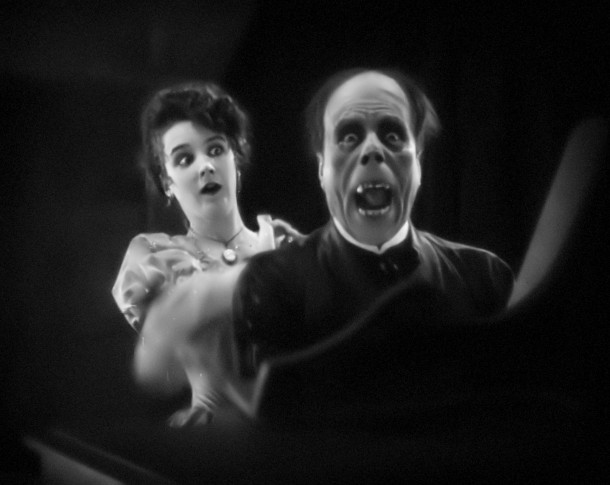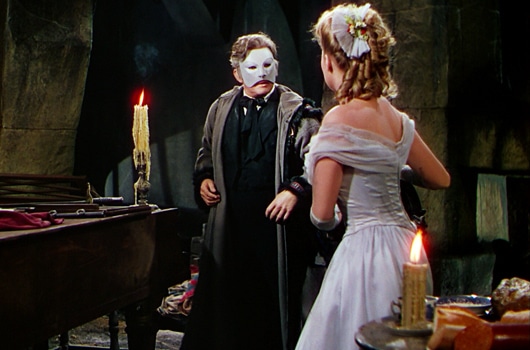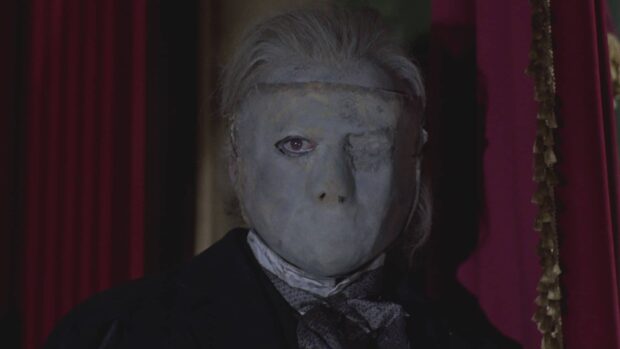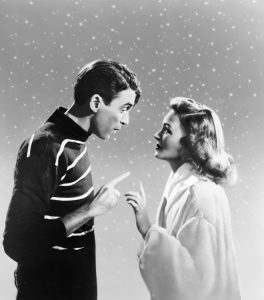Richard Chatten looks at three film interpretations of the famous 1910 novel by Gaston Leroux

Phantom of the Opera (1925)
Dir: Robert Julian | Cast: Lon Chaney, Mary Philbin, Norman Kerry
Although serving as both the visual and thematic template for most subsequent horror films, along with Lon Chaney’s extraordinary makeup in the title role – in later films The Phantom always spends more time in a mask – its unfortunate that Chaney was saddled with a journeyman like Rupert Julian to direct; with the result that although Chaney’s best-remembered film, it’s far from his best.
Despite the lavishness of the production – which went on to be a huge box office hit – it lacked the sheer single-minded morbidity of many of Chaney’s other films; particularly those he made with Tod Browning.
Best Picture Awards | Best Picture/Performance of the Month 1925

Phantom of the Opera (1943)
Dir: Arthur Lubin | Cast: Nelson Eddy, Susanna Foster, Claude Rains
In this 1943 edition of the American romantic horror film jobless violinist Enrique spend money anonymously to subsidise the musical lessons of a soprano who he secretly loves.
It’s a measure of the increasing status of Universal’s horrors that Oscar-winning Technicolor photography was lavished upon their remake of the 1925 classic; although the end result recalled Maria Montez rather than Boris Karloff.
Casting Claude Rains as The Phantom was an indication that the character was being softened, the acid in the face rather than deformity necessitating a mask making its first appearance. But the fact that Rains receives third billing after Nelson Eddy and Susannah Foster serves as warning that there’s going to be plenty of opera but not much Phantom.
Academy Award winner 1944 Best Cinematography | Art Direction

Phantom of the Opera (1962)
Dir: Terence Fisher | Cast: Herbert Lom, Heather Sears, Edward de Souza
Christopher Lee having received operatic training and being possessed of an excellent singing voice particularly regretted failing to secure the lead in Hammer’s version of Gaston Leroux’s novel, the role instead going to Herbert Lom, after Cary Grant’s initial enthusiasm for making a film for Hammer waned.
The fact that the script was written with Grant in mind accounts for the toning down both of the Phantom’s madness and his capacity for violence – which why the dirty work is left to Ian Wilson’s hunchbacked dwarf – and when The Phantom finally rips off his mask, the makeup is grisly but anticlimactic.
ALL AVAILABLE ON DIGITAL PLATFORMS AND BLURAY

 Dir.: Frank Capra; Cast: James Stewart, Donna Reed, Lionel Barrymore, Henry Travers; USA 1946; 130 min.
Dir.: Frank Capra; Cast: James Stewart, Donna Reed, Lionel Barrymore, Henry Travers; USA 1946; 130 min.